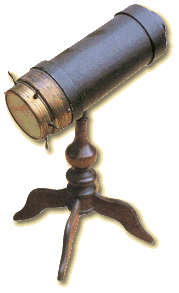FIGURED MAPLE
COCO BOLO
See all my work at www.wrightmade.com
- - - - - - - - - - - - - - - - - - - - - - - - - - - - - - - - - - - - - - - - - - - - - - - -
 Bush’s kaleidoscopes had a barrel of black hardboard with a spoked brass wheel rotating an object cell, mounted on a turned wooden stand. Bush’s ‘scopes were unique largely because of the objects to be viewed – as many as 35 different objects of various colors and shapes, some even filled with liquid containing air bubbles. These liquid-filled objects (ampules) were patented by Bush and the concept is still widely used in modern kaleidoscopes.
Bush’s kaleidoscopes had a barrel of black hardboard with a spoked brass wheel rotating an object cell, mounted on a turned wooden stand. Bush’s ‘scopes were unique largely because of the objects to be viewed – as many as 35 different objects of various colors and shapes, some even filled with liquid containing air bubbles. These liquid-filled objects (ampules) were patented by Bush and the concept is still widely used in modern kaleidoscopes. The modern kaleidoscope was invented by a Scotch scientist and inventor, Sir David Brewster (1781-1868). Brewster was a child prodigy who entered the University of Edinburgh at the age of 12. Over a long and distinguished career he made numerous studies and discoveries in the field of optics and the physics of light.
The modern kaleidoscope was invented by a Scotch scientist and inventor, Sir David Brewster (1781-1868). Brewster was a child prodigy who entered the University of Edinburgh at the age of 12. Over a long and distinguished career he made numerous studies and discoveries in the field of optics and the physics of light. This scope is crafted in Chokecherry, from a log given to me by a friend here in Grand Forks. Chokecherry trees are found in many parts of rural North Dakota, northern Minnesota, and the province of Manitoba in Canada. They are commonly found in yards of rural homes in the region. The fruit -- chokecherries -- is used for jam/jellies, as well as pies, and which are considered a treat around here, that is to say when the birds don't eat them first, which they tend to do.
This scope is crafted in Chokecherry, from a log given to me by a friend here in Grand Forks. Chokecherry trees are found in many parts of rural North Dakota, northern Minnesota, and the province of Manitoba in Canada. They are commonly found in yards of rural homes in the region. The fruit -- chokecherries -- is used for jam/jellies, as well as pies, and which are considered a treat around here, that is to say when the birds don't eat them first, which they tend to do.